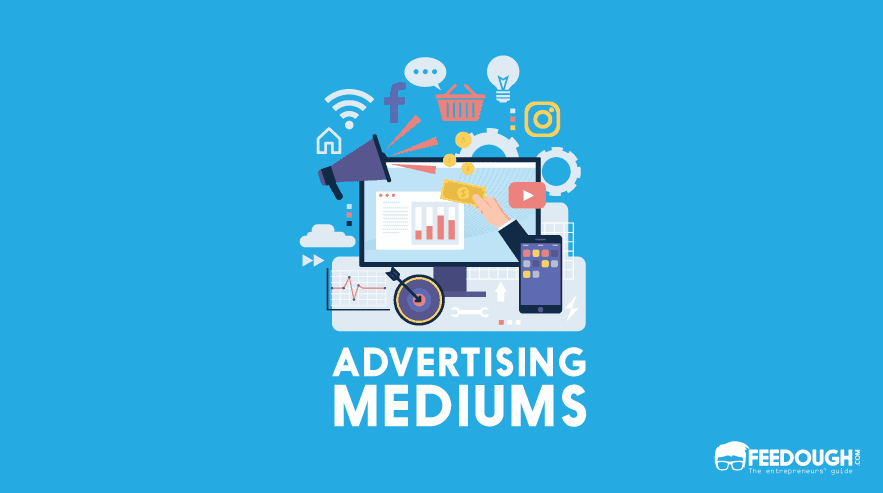
Introduction to Advertising
Advertising is a strategic communication tool employed by businesses to convey messages about their products and services to potential consumers. It is defined as a paid form of non-personal presentation and promotion of ideas, goods, or services by an identified sponsor. This form of marketing is essential in creating awareness, generating interest, and ultimately persuading consumers to make purchasing decisions. The significance of advertising in the marketplace cannot be overstated, as it serves multiple functions that are vital for both companies and consumers.
The primary purpose of advertising is to inform and educate consumers about the availability of products and services, highlighting their features and benefits. This informative aspect helps consumers make informed choices, which is crucial in a market saturated with options. Additionally, advertising aims to create a unique brand identity that distinguishes a company’s offerings from competitors. Through consistent messaging and creative campaigns, businesses can cultivate brand loyalty and position themselves as leaders in their respective industries.
Moreover, advertising plays a critical role in influencing consumer behavior. Psychological studies have shown that well-crafted advertising campaigns can evoke emotions, trigger desires, and ultimately drive customers toward brand engagement. By understanding the target audience’s preferences and motivations, advertisers can tailor their messages to resonate more deeply, enhancing their effectiveness. This influence is not merely incidental; it is a fundamental aspect of how modern economies operate, allowing businesses to thrive and expand their reach.
In essence, advertising is an integral component of the commercial landscape, fostering connections between businesses and consumers while driving economic growth. By utilizing various mediums—from traditional print and television to digital platforms—advertising aligns itself with the evolving needs of consumers, ensuring that products and services remain at the forefront of potential buyers’ minds.
The Evolution of Advertising
Advertising has undergone a significant transformation since its inception, adapting to cultural shifts and technological advancements. The journey began with ancient civilizations, where simple messages were etched on stones or papyrus. The Egyptians, for instance, utilized hieroglyphics as a means to promote goods and services, effectively establishing one of the earliest forms of advertising.
As societies evolved, so too did advertising methods. The advent of the printing press in the 15th century marked a major milestone, enabling the mass production of pamphlets and flyers. This development greatly expanded the reach of advertisement, allowing businesses to engage a broader audience. The 19th century introduced the concept of brand marketing, where products were promoted based on their unique attributes, paving the way for competitive advertising.
The rise of radio in the early 20th century introduced a new platform for advertisers, who could now reach consumers through audio messages. As television emerged in the mid-20th century, advertising experienced a revolution; visual storytelling became a powerful means to connect with audiences. Iconic campaigns and memorable jingles became inseparable from popular culture, showcasing how advertising evolved to emphasize emotional engagement alongside informative content.
In recent decades, the digital era has radically reshaped advertising yet again. The internet provided an unprecedented opportunity for targeted marketing, enabling companies to reach specific demographics through various channels, including social media and search engines. The rise of data analytics transformed advertising strategies, allowing businesses to tailor their messages based on consumer behavior and preferences. Today, advertising continues to evolve, embracing innovations such as mobile marketing and influencer partnerships, with a focus on engaging consumers in more personalized and interactive ways.
Understanding the Advertising Market Value
The advertising market has markedly evolved over recent years, showcasing substantial growth that reflects changing consumer behaviors and advancements in technology. As of 2023, the global advertising market is estimated to be valued at over $700 billion, with projections suggesting it could surpass $1 trillion by 2027. This rapid growth can be attributed to a combination of factors, including increased consumer demand, the integration of innovative technologies, and a significant shift towards digital advertising platforms.
One of the primary drivers of the advertising market’s burgeoning value is the rising consumer appetite for digital content. As more individuals engage with online platforms, businesses are allocating larger portions of their advertising budgets to digital media. This trend is underscored by an impressive increase in online advertising expenditure, which is expected to account for a substantial share of the total advertising market. Various formats, including social media, search engine marketing, and programmatic advertising, are effectively reaching target audiences, resulting in higher return on investment (ROI) for advertisers.
Technological advancements also play a critical role in shaping the advertising landscape. The adoption of data analytics and artificial intelligence enables advertisers to better understand consumer preferences and behaviors. As a result, campaigns can be more precisely targeted, maximizing their effectiveness and efficiency. Moreover, the rise of mobile devices and applications has made it essential for businesses to develop mobile-friendly advertising strategies, further illustrating how technology influences this sector.
In summary, the advertising market is currently experiencing rapid growth driven by consumer demand, the integration of technology, and the continued rise of digital advertising. Understanding these dynamics is essential for businesses looking to navigate and capitalize on the evolving landscape of advertisements, ultimately unlocking potential revenue streams in the process.
Types of Advertising Models
In the digital marketing landscape, various advertising models have emerged, providing individuals and businesses diverse opportunities to generate revenue. Understanding these models is crucial for effectively leveraging them to maximize advertising income. Among the most popular models are pay-per-click (PPC), cost-per-thousand (CPM), affiliate marketing, and sponsored content.
Pay-per-click (PPC) advertising allows advertisers to pay only when a user clicks on their ad. This model is advantageous because it provides a direct link between expenditure and user engagement. Advertisers can easily track the return on investment (ROI), making it an appealing option for many. However, it is important to note that competition can drive up costs, especially in competitive niches, which may affect profitability.
Cost-per-thousand (CPM) is another prevalent model, where advertisers pay for every thousand impressions their ad receives. This model is ideal for brands aiming for visibility rather than direct engagement. CPM can be effective for businesses that focus on brand awareness, although it may not translate to immediate revenue as the direct engagement is not emphasized like in PPC.
Affiliate marketing has garnered significant attention, allowing individuals and businesses to earn commissions by promoting products or services. Affiliates receive a predetermined percentage of sales generated through their marketing efforts. This model can be highly lucrative for those skilled in content creation and audience engagement. The downside is that building a robust affiliate network takes time and requires ongoing effort to maintain effectiveness.
Sponsored content involves collaborating with brands to create content featuring their products or services. This model blends advertising and editorial in a way that can enhance user experience if executed properly. However, transparency is critical, as audiences appreciate genuine content and may react negatively if they perceive the material as overly promotional.
Overall, various advertising models provide different pathways for revenue generation. Exploring these models helps businesses and individuals better understand which strategies align with their goals and audiences, contributing to effective monetization.
How to Leverage Social Media for Advertising Income
Social media has transformed into a powerful platform for generating advertising income, providing individuals and businesses the opportunity to reach wider audiences. To effectively leverage social media for revenue, it is essential to build a strong presence on platforms such as Facebook, Instagram, Twitter, and LinkedIn. The initial step is to identify your target audience, as understanding their preferences and behaviors will assist in crafting content that resonates with them.
Creating engaging content is crucial for attracting followers and sparking interest in your profiles. This content can take various forms, including eye-catching images, informative videos, and compelling written posts. Prioritize consistency in your posts, ensuring that they align with your brand message while being valuable and relevant to your audience. Engaging with your followers through comments, questions, or polls can also foster a sense of community, which is beneficial for nurturing relationships that can lead to higher advertising revenue.
Utilizing the advertising tools available on social media platforms can significantly enhance your monetization efforts. Platforms like Facebook and Instagram offer targeted advertising options, allowing you to promote your content to specific demographics that align with your audience. Sponsored posts and stories enable you to reach potential customers who may not be following you yet, driving traffic and ultimately increasing the likelihood of generating income through advertising.
Additionally, collaborating with influencers and engaging in partnerships can further amplify your reach. Influencers have established relationships with their audiences, which can provide you access to a broader market. This strategic approach can result in higher engagement rates and improved conversion rates for your advertising efforts.
In essence, building a solid social media presence, creating compelling content, and using targeted advertising tools are fundamental strategies for monetizing your social media efforts effectively.
Getting Started with Affiliate Marketing
Affiliate marketing serves as a powerful revenue-generating strategy that enables individuals and businesses to earn money by promoting products or services belonging to other companies. To embark on this journey, it is crucial to grasp the fundamentals of affiliate marketing. The first step involves choosing the right niche that aligns with your interests or expertise. Selecting a niche allows you to focus your efforts on a specific audience, enhancing the relevance of your marketing activities.
Once you have identified your niche, the next step is to research and choose the appropriate affiliate programs. Affiliate programs vary widely, and it is important to select those that offer attractive commissions and reliable tracking. Many affiliate networks, such as Amazon Associates, ShareASale, and CJ Affiliate, provide a plethora of options across different categories. Opt for programs that showcase quality products and have positive reviews to ensure credibility.
Additionally, effectively driving traffic to your affiliate links is critical to success in affiliate marketing. Traffic can be generated through various channels, including social media, content marketing, and SEO optimization. Creating blog posts, videos, or social media content that genuinely informs or entertains your audience will naturally attract visitors. It’s advisable to employ SEO strategies, such as keyword research, to optimize your content for search engines, thereby increasing its visibility.
Lastly, converting leads into sales involves understanding your audience’s needs and crafting compelling calls-to-action. Employing tactics such as offering bonuses, discounts, or exclusive content can incentivize visitors to make purchases through your affiliate links. Monitoring performance metrics allows for continual improvement of these strategies. By combining these elements, anyone can effectively utilize affiliate marketing as a means to unlock additional revenue streams.
Creating Your Own Advertisements
Creating effective advertisements is a crucial step for individuals looking to earn money through advertising. The journey begins with understanding the essentials of crafting a compelling message that resonates with your target audience. A well-written advertisement captures attention and clearly conveys the benefit of the product or service being promoted. Utilize persuasive language and focus on what sets your offering apart from the competition. Think about the desires and needs of your audience, and reflect these in your messaging.
Choosing the right images is equally important in the advertisement creation process. Visual elements can enhance the appeal of your ads, making them more engaging and informative. Opt for high-quality images that not only correlate with the content of your ad but also evoke emotions or curiosity. Consider using tools like Canva or Adobe Spark, which offer user-friendly interfaces and templates designed specifically for creating advertisements. These platforms can assist in generating images that are professional and eye-catching, ultimately improving viewer retention.
Targeting the appropriate audience is a fundamental aspect of successful advertising. Understanding your target demographic allows for tailored messaging and design that speaks directly to their interests and preferences. You can utilize various online tools, such as Facebook Ads and Google Ads, that offer in-depth analytics helping advertisers identify and segment audiences based on specific criteria. Such data enables you to refine your advertisements for better reach and interaction.
Incorporating these elements—compelling messaging, relevant visuals, and precise targeting—will greatly enhance the effectiveness of your advertisements. Creatively utilizing these strategies will help you engage potential customers and maximize your revenue potential through advertising.
Measuring the Success of Your Advertising Efforts
Measuring the effectiveness of advertising campaigns is crucial for any business seeking to maximize its return on investment (ROI). A comprehensive evaluation involves identifying key performance indicators (KPIs) that provide insights into the campaign’s performance. Commonly monitored KPIs include click-through rates (CTR), conversion rates, and return on ad spend (ROAS). These metrics offer valuable information regarding user engagement and overall effectiveness. For instance, a high CTR indicates that the advertisement is compelling enough to attract clicks, while a low conversion rate might suggest that the landing page or product offering requires reevaluation.
To facilitate the tracking of these KPIs, various analytics tools can be employed. Google Analytics is one of the most widely used platforms, allowing businesses to track user behavior on their websites, thus offering insights into how visitors interact with an advertisement. Other notable tools include Facebook Ads Manager and HubSpot, which help measure engagement and conversion rates from social media campaigns. Implementing UTM parameters can further enhance the tracking of individual advertising efforts across different channels, ensuring that all traffic sources are monitored accurately.
Interpreting the data gathered from these analytics tools is essential for optimizing future advertising strategies. Analyzing the performance of each campaign enables businesses to identify successful tactics that can be replicated, as well as strategies that may need to be adjusted or discarded altogether. It is also important to segment data based on demographics, geolocation, and device type to gain more nuanced insights into the audience’s behavior and preferences.
Ultimately, a thorough approach to measuring advertising success not only helps in understanding the current campaign’s impact but also lays the groundwork for refining future advertising strategies. By regularly monitoring KPIs and utilizing effective analytics tools, businesses can unlock the full potential of their advertising efforts and drive revenue growth.
Challenges in the Advertising Industry
The advertising industry is constantly evolving and faces several critical challenges that impact its effectiveness and efficiency. One significant hurdle advertisers encounter is intense competition. With the emergence of new digital platforms and an increasing number of businesses vying for consumer attention, standing out in a crowded marketplace has become increasingly difficult. Companies must develop innovative strategies to differentiate their messages and effectively engage their target audiences.
Another major challenge is ad fatigue, which occurs when consumers are repeatedly exposed to the same advertisements. This saturation can lead to diminishing returns as audiences become desensitized to marketing messages, resulting in lower engagement rates. Advertisers must find a balance between frequency and relevance to maintain consumer interest and foster brand loyalty. Employing diverse ad formats and regularly refreshing content can help mitigate the effects of ad fatigue.
Changing consumer behavior adds another layer of complexity within the advertising landscape. Today’s consumers are more informed, selective, and skeptical than ever before. They increasingly prioritize authenticity and transparency in branding. Advertisers need to adapt to these shifting preferences by creating personalized and value-driven content that resonates with their audience. Understanding consumer insights and leveraging data analytics are essential components for crafting successful advertising strategies.
Moreover, regulatory issues pose additional ch





